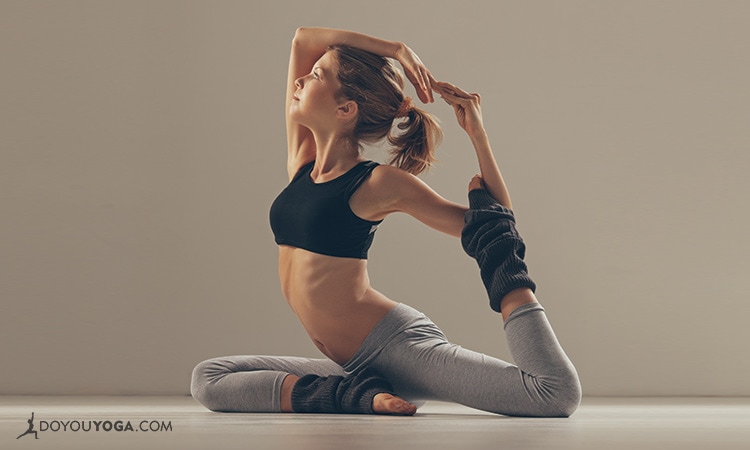Yoga is generally considered a very therapeutic endeavor. Yoga asana is a unique form of exercise that helps make the body strong and flexible, and can even be healing for the body and a place that those with injuries can go for some rehabilitation.
However, this does not mean that the physical practice of yoga asana does not come with the risk of injury. In fact, yoga injuries are becoming more and more common, and that is a real shame.
So, if you are coming to yoga asana for the first time, or have been practicing for a while and want to know how to best safeguard yourself against getting hurt, here are my top five ways to avoid a yoga injury.
1. Check competition at the door.
One of the easiest and fastest ways to get yourself hurt in a yoga class is to be in a competitive mindset—to be looking over your shoulder at the bendy girl who has her leg behind her head, or the muscle man holding his Headstand in the center of the room for 45 minutes.
One of the main reasons we as yogis and yoginis push ourselves beyond our limits into an injury is because we want to measure up to the asana expressions of those around us.
Think of it this way—when you feel like you want to push yourself to do what someone around you is doing, know that being inspired by another is ok, but that you must always listen to, honor, and respect your body and where it is right now.
Remind yourself that by moving slowly toward any asana, taking care to respect your boundaries means that you will get to that asana much faster than if you pushed yourself and got hurt. Allow inspiration, and then work within your current state.
2. Be mindful during repetitive movements.
The second most common place to get hurt in a yoga class is during repetitive movements. Think of the transition from Plank to Chaturunga in Sun Salutations, jump throughs and jump backs, and any other sequence that you personally repeat often in your practice.
It is during these oft-practiced movement patterns that we can lose our focus and can start to develop bad form without even noticing it. It can be very tempting to get lazy, or to overly rely upon muscles that are stronger or more open—creating an imbalance in your body that can easily lead to injury.
So be sure that you are staying present with your body, and checking in with your form periodically during your practice. Better to be safe than sorry!
3. If it’s hot, hold back.
If you are practicing yoga asana in a heated room, know that this artificial heat may create extra openness in your ligaments and tendons that does not exist under normal circumstances.
Meaning you may feel that you have an extra inch or two in your Forward Bends or in your Pigeon Pose—but know that stretching a muscle and stretching a ligament or a tendon are two very, very different things.
Muscles have bountiful blood supply—meaning if you injure a muscle the healing time will be shorter. Ligaments and tendons on the other hand have a very, very minimal blood supply, meaning if you stretch one of them, there is a chance your healing time will be months or years.
It could even mean that healing is not possible at all and now you must learn to live with this injury. So, even though you may be tempted to push your stretches in hot yoga, please be safe and hold back. It is not worth the injury that may come.
This is not to say that you should be overly cautious, or overly restrained, just focus on not going any farther than you would in a room that was not artificially heated.
4. Balance strength and flexibility.
If your practice is imbalanced—meaning you are focusing only on strength and letting yourself get tighter and tighter as you go along, or only focusing on flexibility, allowing your body to become more and more flaccid—you might be setting yourself up to get hurt in yoga asana.
The body needs a balance of strength and flexibility to stay safe—and so your practice must be helping you incur both. If you are naturally very bendy, then I would highly recommend focusing your practice on strength building movements, and vice versa. Balance is key to staying injury -ree.
5. Become best buddies with your boundaries.
Finally, find your edge and promise yourself that you will always, always honor it.
Now, I am not telling you to decide that your current level of flexibility or strength is where you must resign yourself to stay forever, but what I am saying that in order to progress safely in your practice you must know where your edge is, and how to play on it.
So, learn where you are right now, and then promise yourself that you will only ever push yourself past that place in a loving, playful, gentle way.
Promise yourself that you will listen to your instructor, that you will use good form when challenging your limits, and that you will learn the difference between the discomfort of growth, and the discomfort of hurting yourself. You will learn this if you pay attention. Tune in with your body, and be safe.
Have you ever had a yoga injury? Do you think any of these tips would have helped you avoid it? Let me know, I would love to hear about your experiences!


